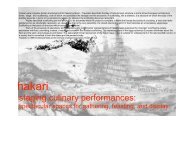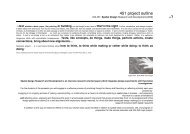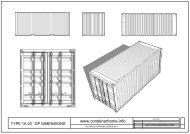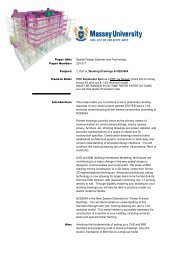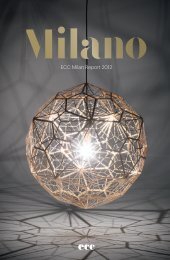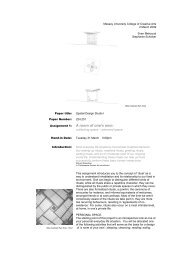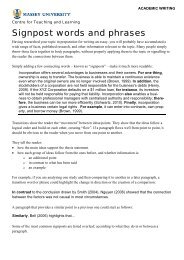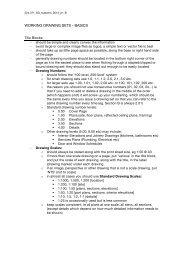rethinking design - Spatial Design@Massey
rethinking design - Spatial Design@Massey
rethinking design - Spatial Design@Massey
You also want an ePaper? Increase the reach of your titles
YUMPU automatically turns print PDFs into web optimized ePapers that Google loves.
ethinking <strong>design</strong>biomimicry: interior <strong>design</strong>jasmin yeeJane Benyus (1997) coined the term ʻbiomimicryʼ which derives from the Greek bios, life;and mimesis, imitation. It is “innovation inspired by nature.”Nature as model: Biomimicry is a new science that studies natureʼs models whichemulates itʼs forms, processes, systems and strategies to solve human problems -sustainably. The Biomimicry Guild have developed a practical <strong>design</strong> tool, called theBiomimicry Design Spiral, for using nature as model, for example; a solar cell inspired bya leaf.Nature as measure: Biomimicry uses an ecological standard to judge the sustainability ofour innovations. After 3.8 billion years of evolution, nature has learned what works andwhat lasts. Nature as a measure is captured in Lifeʼs Principles and is embedded in theevaluate step of the Biomimicry Design Spiral.Nature as mentor: Biomimicry is a new way of viewing and valuing nature. It introducesan era based not on what we can extract from the natural world but what we can learnfrom it.Benyus, J.M. (2002). Biomimicry: Innovation Inspired by Nature. HarperCollins Publishers.Interior <strong>design</strong> accommodates conditions which are functional, enhance thequality of life and culture of the occupants, and are aesthetically attractive.Interior <strong>design</strong>s are created in response to and coordinated with the buildingshell, and acknowledge the physical location and social context of the project.Interior <strong>design</strong> is a branch of architecture dealing with the selection and organization offurnishings for the interiority of a space. - NCIDQ, 2004.http://www.ncidq.org/pdf/id_definition_07-2004.pdfThinking of biomimicry – interior <strong>design</strong> as a wall lining or shelter:Systems, forms and processes inspired by nature can provide the necessity for which weare able occupy space in a structural manner.Max Planck Institute are developing adhesives based onbiomimicry of beetles' feet.Inspired by the microstructures of beetle feet a team from the Max Planck Institute (MPI)in Stuttgart, Germany, and Case Western Reserve in Cleveland, US, has developed an"insect tape", a powerful sticky patterned adhesive, twice as sticky as flat tapes. Thenovel glue-free product adheres better to dusty surfaces, and can be re-employedmultiple times after being washed with water and soap. The <strong>design</strong> enables the materialsto stick to smooth walls without any adhesives. The researchers say the technology,which uses microhairs "reminiscent of tiny mushrooms", could someday allow robots toclimb vertical glass walls and refrigerator magnets to be replaced by non-magneticobjects.In rigorous tests carried out by the Max Planck Institute researchers with measuringinstruments developed especially for the purpose, the artificial adhesive system gave animpressive performance and demonstrated many benefits. It lasts for hundreds ofapplications, does not leave any visible marks and can be thoroughly cleaned with soapand water," reads media release from the Max Planck Institute for Metals Research. "Theresearchers found that five square centimeters of the material can hold objects weighingup to one hundred grams on walls." – Stanislav Gorb (co-author of MIP).



